IAS 2014: news from Melbourne
23 July 2014. Related: News.
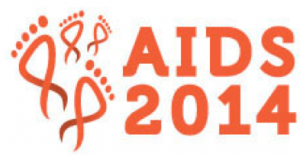 The 20th International AIDS Conference is being held in Melbourne from 20-25 July 2014.
The 20th International AIDS Conference is being held in Melbourne from 20-25 July 2014.
This page will be used for pre-press reports for HIV Treatment Bulletin and for short summaries of some of the most interesting clinical studies, with links to the study abstracts.
The programme for the meeting is accessible online using the programme at a glance link from the conference website. (Note: the searchable programme needs to have free software called “silverlight” which has an option to download automatically if your computer doesn’t already have this).
Some programme sessions include the option to download PowerPoint slides for some of the slides (use the link underneath the full session listing), and some have links to webcasts (see below).
i-Base articles
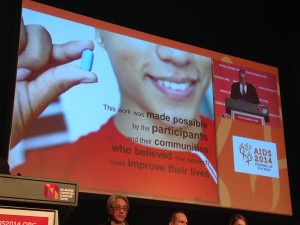 PrEP – results from open label use of daily oral PrEP approach 100% but is only affective if adherence is good. Missing an odd dose is fine but taking less than 2 doses a week significantly reduces protection.
PrEP – results from open label use of daily oral PrEP approach 100% but is only affective if adherence is good. Missing an odd dose is fine but taking less than 2 doses a week significantly reduces protection.
Just as importantly, less than half of previous study participants decided to take PrEP open label and although adherence was okay at the start (50% people had good drug levels) this dropped over the study. Drug levels were difficult to find in the people who become HIV positive. Abstract link. Full results were also just published in Lancet Infectious Diseases.- Cure
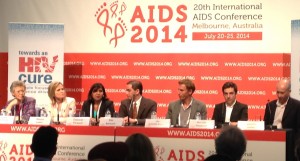 research at IAS 2014: TILDA measures the reservoir and romidepsin wakes it up
research at IAS 2014: TILDA measures the reservoir and romidepsin wakes it up
Latest news on cure research… timeline for a cure, a new test to measure the latent reservoir, and first results showing that sleeping cells can be targeted to wake. - 2014 pipeline report launched at IAS
Latest annual review from i-Base and TAG of pipeline drugs for adults and children, and strategies for cure and prevention for HIV, HCV, TB and vaccine research. - Candlelight remembrance in Federation Square
A few photographs posted to the i-Base Facebook page from the remembrance ceremony which this year was especially significance because of the delegates who who lost their lives on the MH17 flight. Plus a short video of the minute silence. 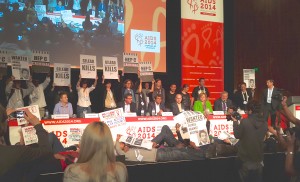 Activists protest price of Gilead’s HCV drug sofosbuvir
Activists protest price of Gilead’s HCV drug sofosbuvir
To an O’Jays soundtrack (For the Love of Money) and delivering a liver on a silver casket, activists at the conference protested the exorbitant pricing of Gilead’s new hepatitis C drug Sovaldi (sofosbuvir).
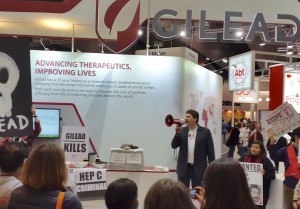 Taking to the stage during Gilead’s Greg Alton’s presentation on treatment access, marching through the conference venue and stopping business-as-usual at the company’s stand in the exhibition hall. A community press statement from Treatment Action Group quotes Alton defending Sovaldi’s price, claiming that treatment is “cheaper than a liver transplant” without noting that most people with hepatitis C have not even been diagnosed, have little chance of treatment and no hope for a transplant. “Extortionate pricing will kill people, no matter what the illness – HIV, hepatitis, or cancer,” said Edo Agustian, an Indonesian activist coinfected with HIV and HCV. i-Base are one of many other organisations raising the unethical issue of sofosbuvir pricing. This is an issue that unites community activists, health workers, doctors and people needing treatment. Michel Sidibé, head of UNAIDS said “HCV drugs are priced out of reach and out of control”.
Taking to the stage during Gilead’s Greg Alton’s presentation on treatment access, marching through the conference venue and stopping business-as-usual at the company’s stand in the exhibition hall. A community press statement from Treatment Action Group quotes Alton defending Sovaldi’s price, claiming that treatment is “cheaper than a liver transplant” without noting that most people with hepatitis C have not even been diagnosed, have little chance of treatment and no hope for a transplant. “Extortionate pricing will kill people, no matter what the illness – HIV, hepatitis, or cancer,” said Edo Agustian, an Indonesian activist coinfected with HIV and HCV. i-Base are one of many other organisations raising the unethical issue of sofosbuvir pricing. This is an issue that unites community activists, health workers, doctors and people needing treatment. Michel Sidibé, head of UNAIDS said “HCV drugs are priced out of reach and out of control”.- Higher ART coverage is associated with lower HIV infection rates in a multi-country analysis
If all low- and middle-income countries had achieved the same level of antiretroviral treatment (ART) coverage in 2012 as Botswana, 65% of new HIV infections and 70% of HIV-related deaths could have been prevented – according to an analysis presented at AIDS 2014. - Pill A, Pill B: simplified second-line treatment for low-income countries
A one pill, once-daily fixed dose combination (FDC) second-line regimen might be feasible for low-income countries according to a proposed clinical development programme.
- UNAIDS sets 90:90:90 target for 2020 to end AIDS by 2030
Launch by UNAIDS of a strategy with a target of eliminating AIDS by 2030. This includes a 90-90-90 campaign outlined in report detailing new targets for testing and treatment. - No difference in overall anaemia rate with reduced dose AZT
A study looking at reduced dose AZT showed no difference in overall rate of anaemia but demonstrated improved safety and similar efficacy compared to standard dose.
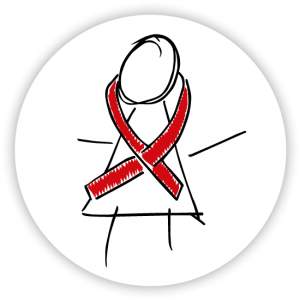 Plus reports from the 6th Paediatric Workshop held in Melbourne just prior to AIDS 2014.
Plus reports from the 6th Paediatric Workshop held in Melbourne just prior to AIDS 2014.
- Influence of early ART on antibody detection in children
- Time to first-line failure in the IeDEA cohort
- 3TC or FTC monotherapy suboptimal as a bridging strategy for adolescents
- Update on paediatric antiretrovirals
- Rationalising the paediatric antiretroviral formulary in Malawi
External links to IAS 2014 resources
- IAS webcasts and conference videos on YouTube
Links to some webcasts from the conference are being added to a YouTube channel as they become available. The opening ceremony and press conferences are online. Research sessions seem to have a longer delay but are listed on this page for scientific sessions. Separate pages for main types of sessions are: Track B (clinical studies), Track C (prevention), Track D (social and political) and Track E (implementation). So far, nothing for Track A (basic science, cure and vaccines). Other webcasts that are being posted to the conference website can only be accessed from the session listing in the programme at a glance (see above). - PrEP research – oral abstracts
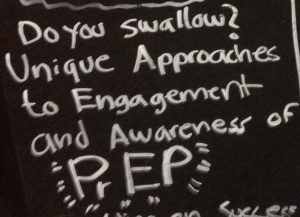 Link to the webcasts and presentations oral abstracts for PrEP are now online. Results from the open-label follow up from the iPrEX study were presented by Robert Grant. People using PrEP (about 1200) continued to be at a lower risk of HIV, but the results are most important for linking drug levels to expected adherence.
Link to the webcasts and presentations oral abstracts for PrEP are now online. Results from the open-label follow up from the iPrEX study were presented by Robert Grant. People using PrEP (about 1200) continued to be at a lower risk of HIV, but the results are most important for linking drug levels to expected adherence.
Transmissions occurred in people who had drug levels similar to taking 2-3 doses a week, but not when levels indicated people took 4 or more doses a week. One way to interpret this is that unlike using HIV meds as treatment, adherence when used as PrEP is likely to still be very strong even if PrEP is only taken every other day. The results do not say that PrEP is 100% effective with good adherence, but they show it gets pretty close. They also show that even when people know that PrEP works, adherence is difficult for some people. - HIV and complications
This session on Wednesday afternoon included a diverse mix of interesting studies. The HPV vaccine was effective in HIV positive adolescents, but this will be dependent (based on this study at least) on being vaccinated before coming into contact with HPV. Australian researchers reported a natural history study on anal cancer in gay men, that may help decide on who should be treatment of high-grade lesions that are a precursor to cancer. This is important given how common high risk HPV infections and abnormal precursor cells are in HIV positive gay men and that treatment is often difficult. In this study, high grade lesions reversed in many men but not when HPV16 persisted. The D:A:D study provided a breakdown of BMI increases after starting ART that showed how this has different implications for the risk of heart disease depending on BMI level at baseline. A sub-study of the START trial reported high rates of chronic obstructive pulmonary disease (COPD) in HIV positive people (approximately 7% but varying by region). Smoking and older age were the strongest predictors for COPD – a leading global heath risks – concluding on the importance of finding effects programmes to help people quit. - Treatment as Prevention
This session on Thursday morning is due to be webcast and looks interesting both for scientific and community overviews (including from the UK-based activist Edwin Bernard).
